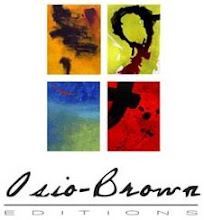(Brought to you by our friends at Art Business Advice)
An artist’s “brand” is not just a label, a logo, or a signature—instead, it is one of the most powerful marketing tools you can have. What do I mean? Read on.
What is Branding, Exactly?Your brand is what you’re known for. Good branding is the act of becoming known for something that you do, above any other competitor. As an individual artist it is very likely that you don’t have an established brand like large companies do—which means if you want to gain customers, you must create a brand of your own. Your brand, however, should not be focused on you. It should be focused on attracting customers. Some brand phrases are too generic, too vague to set you apart. You can call yourself the “Best Western Artist in America” but so what? Who compared you to whom? Does that even connect with potential buyers? On the other hand, if you guarantee your western art by saying, “My brand is burned onto every painting,” then that’s something tangible for people to remember. You’re the artist who uses a branding iron to sign your work. Now that would certainly set you apart from the herd! Putting Yourself In Your BrandIs there something unique or otherwise notable about your artwork that’s worth mentioning to someone? Then don’t just mention it—shout it from the rooftops! What do you think of when you hear, “Have it your way”? How about, “The real thing”? If you said Burger King and Coke, you’ve already been swayed by the lure of branding. Effective companies constantly reinforce public awareness of their brands to achieve long-lasting recognition. Your own brand should encompass something unique about your art, or about you, so that potential customers learn to recognize your style. In the art world, Thomas Kinkade uses the brand “Painter of Light,” as his defining statement. His brand explains him and his art in a short, powerful sentence—and because he’s so well branded, everyone knows who he is! When we think of brands, we often think of just an image, but that’s actually not the case. While most of us are familiar with the Taco “Bell” or the Nike Swoosh, good branding is usually more of a catch phrase that states a purpose or reason for being rather than a logo. How to Create a Strong BrandTo create an effective brand you must first define the type of customer you have. Second, you should create and refine your brand to as simple an item or phrase as possible. Third, you have to promote your brand constantly and consistently. Assuming you already know your customers, or who you’re trying to appeal to, let’s talk about the second phase: creating and refining your brand. 1) Define what sets you apart or the best thing you gave to offer Take some time, sit down and really apply yourself to defining the single best thing that you do. Often this will be what people already mention when they discuss you or your art—after all, it’s what you’re good at. Other times, what makes you unique is the reason you create your art, or the life experiences you’ve had which have shaped you as an artist. There is no wrong answer. Simply find that unique element that is you and move on to step two. 2) Create a key phrase built around your core competency There will probably be many ways to describe yourself and your unique abilities, but remember that a key phrase should be short and concise. Don’t ever use ambiguous statements like “The low priced leader.” Of what exactly? For whom? Compared to whom? Do you see the problem? Look around and see what statements are being used by other artists and learn from them. Learn from their mistakes or successes, and then when you create your own key phrase, be different! 3) Draft a symbol or logo to reinforce the message visually Sometimes having a symbol or visual identity to go along with your branding statement can be very effective. . . but, it isn’t always necessary. If you feel the need for a logo to reinforce your key statement, then create one, or adapt one. What I mean by “adapt one” is that logos are often created simply by consistently using a unique font. Stick with one type-face every time you use your statement and that will become the symbol you are known for. For example, the old UPS label wasn’t fancy at all, but through simplicity and repeated use, it became widely recognizable. Perhaps your hand-written signature is the symbology you’re looking for. Is it a strong, recognizable mark? Does it reflect the rest of your art? Norman Rockwell used his signature as a logo. . . could you do the same? Effectively Promoting Your BrandLarge companies with deep-pockets can launch massive campaigns utilizing every form of media. Most of us will not have the resources for that, so each piece of information we produce must be effective. Consistently using your brand statement and/or brand symbol will help you get the most bang for your buck. This means putting your brand on everything you create. If you send e-mails, use your brand phrase or statement below your signature line. If you produce postcards or flyers, place the statement prominently. Also, don’t forget to put your brand on your web site and business cards. Ideally you’ll have a well-balanced mix of online and offline promotion, and through repeated use, you will begin to forge an identity based upon your defining statement. You may even become “one” with the brand, like Nike has with “Just Do It.” You know when this “oneness” is achieved by the fact that people know instantly who you are when your symbol is displayed or your phrase is written or spoken. Reposted By: Adam Brown |
